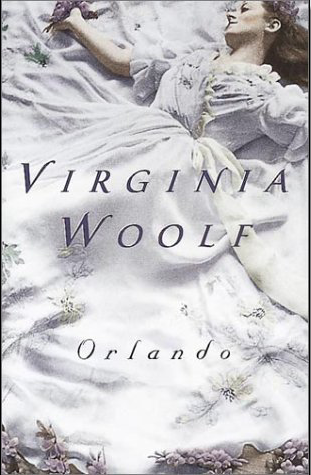 Life is Poetry; Poetry is Life
Life is Poetry; Poetry is Life
Woolf, Virginia (1928). Orlando. Orlando, FL: Harcourt
This is one of Woolf’s most popular novels, partly because of its fascinating story. A young English boy (Orlando) loves poetry and adventure. The dying Queen Elizabeth (around 1600), takes a fancy to him and makes him a nobleman with a vast estate and a grand house. He grows up much pursued by the ladies. Eventually his career includes being ambassador to Turkey. There, he falls into a trance and awakes a woman. Just like that. No explanation.
There are clues prior to this point that Woolf was experimenting with magical realism, long before that term or that genre had been invented, but this moment, one third of the way into the book, will certainly be a surprise to the six readers on the planet who do not know it is coming.
Perhaps more surprising, the change is no big deal to Orlando. She feels the same inside, so what difference does outer appearance make? She is occasionally annoyed at having her legs restricted by petticoats, but there is no psychological upheaval. Her staff back home accepts the change. There are some legal problems, because women cannot own property and she has to fight that. But in general, life goes on. She meets people, has lovers, admires the flowers, and grows older, until the reader notices that it is the middle of the 1700’s. Orlando has aged perhaps 10 years while 150 years of history have gone by. But nothing has really changed for the ultra-wealthy Orlando, relatively isolated on her estate. She still goes to dinners and buys furnishings for the mansion. She has lovers, marries, and eventually has a male child who can inherit the estate, solving her legal problems.
She becomes a published poet in the 1800’s but gets bored with society and with love. We eventually see her going to a London department store in 1928, marveling at the horseless carriage. Over 300 years have passed. She despairs at the meaningless of life and the story ends. Just like that.
Some readers dislike the novel because despite the exciting premises of gender change and time travel, basically, “nothing happens,” and that’s because this is literary fiction, where what happens is never “what happens.” The purpose of the novel is to explore the meaning of gender and the experience of psychological time.
I found the gender theme disappointing. It was radical in 1928 to say that gender is an arbitrary social construction, not biologically determined, of no importance to the self. Woolf was saying also that there is no innate psychological difference between men and women. Love is about self and psychology, intuition and conversation, not about biology. Consequently, in the novel, Orlando has romantic relations with both men and women (as Woolf herself did). Today, most educated people agree that gender is socially constructed, but unless you are an ultra-wealthy, socially isolated aristocrat like Orlando, gender has very significant social and economic life consequences. In the novel, Orlando’s pregnancy and childbirth are barely mentioned in passing. Clothing is far more consequential than biology. It’s an interesting point, especially in 1928, but I didn’t buy it.
I found the time-travel theme equally frustrating. Woolf’s point is that psychological time is defined by the intellectual life you live, not by the clock or calendar. If you live in the world of Shakespeare, Marlowe, and Milton, as Orlando did, and as Woolf herself did, then psychologically, you live in the Elizabethan age. Such is the power of poetry. If you also love Browning and Tennyson, you live in the Victorian age. If you live in 1928 and your autobiographical memories are those implanted by the poets and novelists of the past 300 years, then psychologically, you can say you have lived 300 years. It’s an interesting and true thesis, but like the gender identification thesis, it’s too one-dimensional to be compelling. Orlando in 1928 is dumfounded by the elevator, because in her life experience you always knew how things worked, but the elevator appeared to be magic. Well, that’s an interesting observation, but a lot of other things happened between 1600 and 1928, not all of them technological. Not even denting Orlando’s consciousness were the English civil war, many other wars and plagues, the great fire of London, the rise of scientific thinking after the Renaissance, the works of Newton, Locke, Bacon, Hume, DeFoe, Fielding, Walpole, Coleridge; and many other historical events. So the self-equals-memory thesis only works if you live in a cocoon.
The narration in Orlando is innovative in several ways. The book is presented as a biography, so the narrator is ostensibly “a historian,” as she calls herself, yet the narrator is also third-person-close, meaning, she can get right inside the thoughts of Orlando in an almost first-person way. Woolf plays with this technique creatively, abruptly changing the voice from intimacy to the objective reporting of a biographer, and sometimes even spills into a second-person voice speaking directly to the reader. The tone of the novel is light-hearted, and often sardonically funny, as if Woolf were just letting off some literary steam with a romp into what we would today call prose poetry. I’m no Woolf scholar but I think the book is significantly an autobiography, not a mock biography, and Woolf took the project seriously. Despite my overall disappointment with the ideas and insights presented, the novel is a paean to the power of human imagination and there is plenty of literary grist in Orlando to keep any reader completely engaged.
